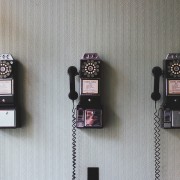The evils of no-reply email
Imagine you’re in a department store. As you walk down the shoe aisle looking for the brown suedes you saw in the catalogue, a staff member catches your eye and speaks to you.
“Apologies, the catalogue shoe range is not in this area.”
Useful information, but not enough. So you say, “Thanks. Where can I find them?”
“I’m sorry, I don’t answer questions. I’m just here to tell you this one piece of information. You’ll need to go to the reception desk at the other end of the store to ask that.”
What?
This is intuitively wrong. If a person gives you important news you expect to be able to ask them for clarification. Or ask them for details in related fields.
Providing critical info for your audience in one place but telling them they must get more details in a separate place at a different time, is awkward and unintuitive.
So why do some of our largest service providers do it?
I had a notice of works from my ISP recently – from a “No Reply” email address. I want to know more details so I can understand the impact of their changes. But I can’t just hit “reply” to ask them. Why not? They just told me about this by email. It doesn’t make sense.
You can imagine the conversation that happened internally:
“This is big. When we tell our customers, we’ll get a bunch of questions.”
“Well, we have basically two options: we could prepare support to answer their questions. Or we could make it harder to ask us those questions in the first place.”
[Sideways glances.]
Using a no-reply email address is like using your voice to talk to someone but closing your own ears – and accepting their response only in semaphore.
Instead, make it as easy as possible for your clients to get into conversations with you and your team. Effective communication goes both ways.






